My Pacific Crest Trail (PCT) thru-hike was to begin in 9 days, but I hadn’t slept in my tent yet.
It is never wise to start a thru-hike without testing your gear first. Though I had done a lot of research and felt fairly confident in my choice of tent (you can read about that here), I hadn’t field-tested it or spent the night in it. I had only set it up in my backyard.
It would have been best to take it on an overnight before leaving Virginia, but I had run out of time. I did have a few nights of camping planned on my train journey to the PCT though. Better late than never.
My first opportunity was foiled by some unseasonably cold weather in Glacier National Park. Luckily I had another chance when I arrived in Salt Lake City a week later.
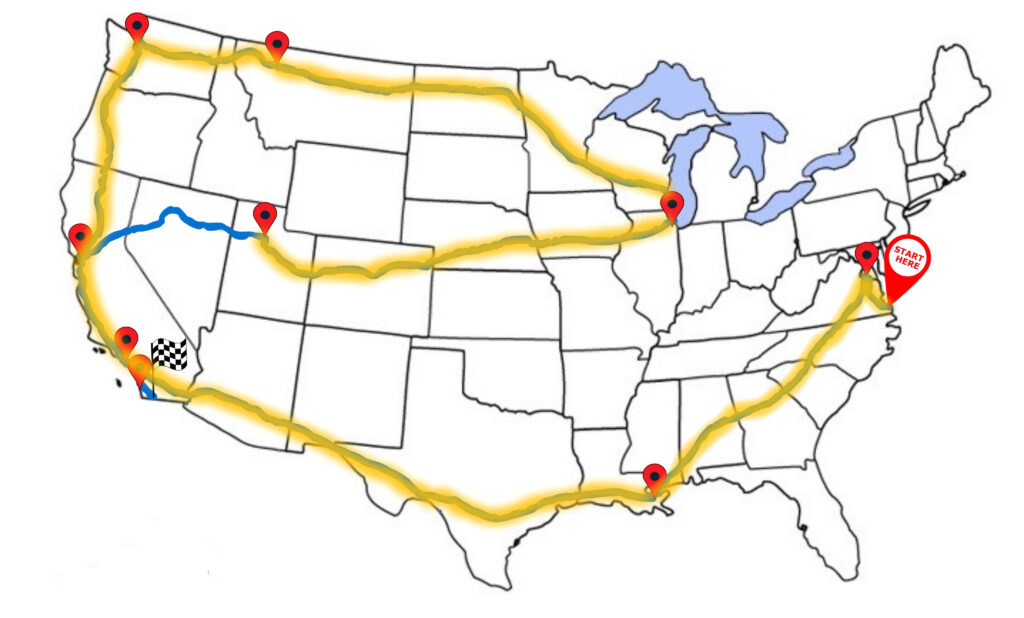
I had four days in Utah, my longest stop on my cross-country train trip. I had a rental car reserved, but no real plans for how I was going to spend my visit. (I had designated the day before to make a plan, but after a rock slide in the Rockies, the day hadn’t gone as planned).
I was still in a fog after arriving in Salt Lake City at 2:30 am the night before. I picked up my rental car and buckled up. I put the key in the ignition and suddenly realized I had no idea where I was going. Where does one camp in Salt Lake City? uhh, the Salt Lake, I guess?
A quick Google search pulled up Great Salt Lake State Park, 20 minutes from downtown. I wanted to see the Tabernacle Choir the next day, Easter Sunday, so I didn’t want to venture too far from the city. I didn’t have the brain energy to figure anything else out anyway.
I drove to the tiny park on the edge of the lake. I was lucky to get one of only two tent sites. The campsite was right on the shore of the lake. Covering a massive area of 1,700 square miles, the Great Salt Lake is the largest saltwater lake in the Western Hemisphere.
It’s pretty, I thought, but what’s that smell? It reminded me of the LA subway, the smell of grime and ripening urine.
Due to its exceptionally high salinity levels – 3 to 8 times saltier than the ocean – there are no fish in the lake. Only brine flies and brine shrimp find the water habitable. The lake does support millions of migratory birds, however.
I’m told the lake is a favorite spot for bird watchers, but the majority of birds that I saw were dead. Walking along the beach I saw dozens of dead birds lining the shoreline. The state park pamphlet assured me that this was normal. Because the lake is so salty and cold, birds die but don’t decompose. They are pickled there for months, even years, after their death. Well, that explains the funny smell.
Finding a spot devoid of bird carcasses, I set up my tent in the sand. My PCT tent is a trekking pole tent, meaning it is held up by trekking poles instead of separate tent poles. This saves on pack weight, since I carry the trekking poles anyway.
Trekking pole tents are a great option for the specific needs of thru-hiking, but they are not very good all-purpose tents. They don’t do well in sand, for example. If the stakes come loose, the whole thing collapses. They require tension from the ground stakes to stay up, but sandy ground is too loose to provide a good grip on the stakes.
I didn’t feel great about my pitch in the wet sand, but there was nowhere else to set up. I put some big rocks over the stakes to help keep them secured. That should do it, I thought.
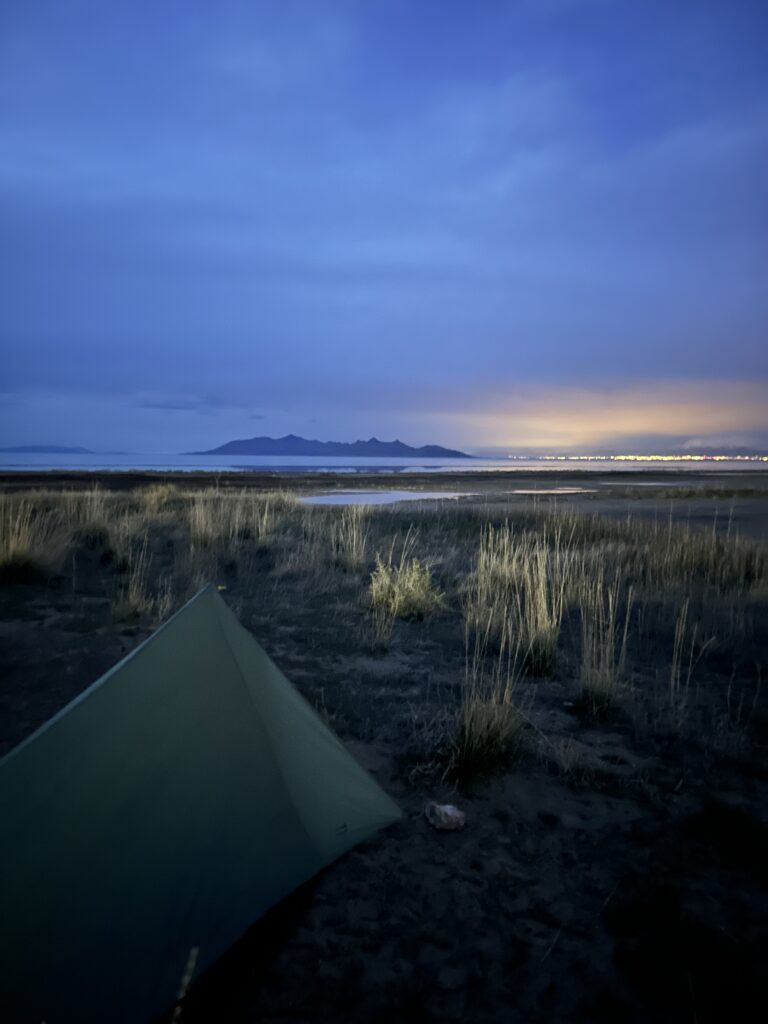
I woke up at 5 am with a wet tent on my face. It had been a cold and rainy night. All night the wind from the lake ripped against the side of my tent, and one of the rear stakes had finally worked itself loose from under the rock. Without the tension from the stake to keep the trekking pole up, the whole tent collapsed.
I clawed my way out of the deflated tent, which was now just a wet tube of fabric clinging to my skin. I finally found my way out, but now without my body weighing it down, the tent instantly turned into a sail in the wind, flinging cold rain all over me and my gear.
Happy Easter, Kirby.
It was early, but there was no point in attempting to re-pitch my tent in the wind. Everything was soaked anyway. Shivering, I gathered armfuls of gear and carried it on several trips up the hill to my car. Blasting the heat, I was grateful to have a car (a luxury I won’t have on the PCT).
After collecting myself and warming up over a gas station coffee, I drove to downtown Salt Lake City to catch the weekly Sunday broadcast of the Tabernacle Choir (formerly the Mormon Tabernacle Choir).
It was still dreary and rainy, but that didn’t stop the dedicated masses from attending the performance. The tabernacle was packed with thousands, not to mention the 360-person choir and 110-person orchestra. Still a bit wet and haggard, I felt a little out of place among the Mormons in their Easter dresses and best suits. Nonetheless, I enjoyed the rich choral and organ music, concluding in a rousing rendition of the Hallelujah Chorus.
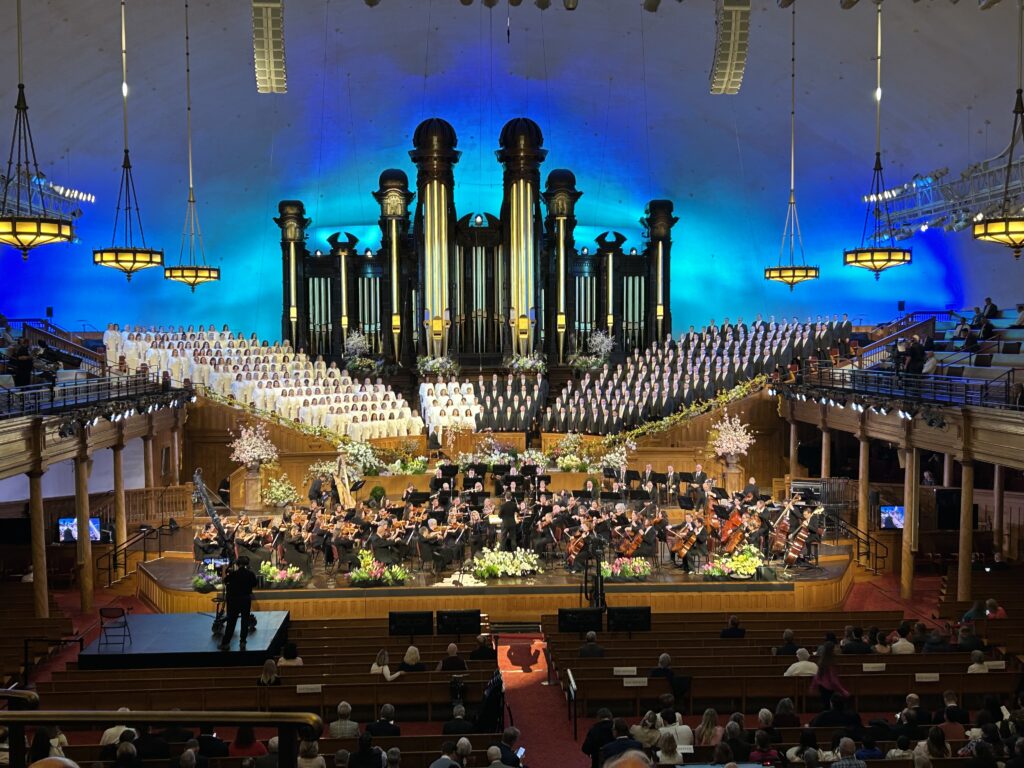
After the performance I drove 1.5 hours to the Diamond Fork Road in the Uintah National Forest, where I would spend the next two days camping and hiking. I found a lovely spot by a creek and set up camp. I was glad to this time be able to set up my tent on solid ground, and after several nights in a row of inadequate sleep, I went to bed early.
I woke up in the middle of the night with my tent wall pressed against my face.
Not again.
I thought the tent had collapsed again, but as I fumbled for my headlamp, I realized that it was just sagging. I touched the wall. It felt heavy.
I turned on my headlamp and saw that two inches of snow had accumulated on the tent. It was early in the morning on April 1st. The forecast had called for more rain, but the snow was a surprise. I pushed the tent wall to whack the snow off. I had to do this several more times in the night as more and more snow accumulated.
April Fools, Kirby.
Laying awake in my tent, I catastropized. I’m going to get stuck here… My Corolla won’t be able to handle the snow… I’ll have to wait for days for the snow to melt... I’m going to miss my train… There’s no cell service here… I can’t even rebook my ticket … I don’t have enough food... I’m going to have to ration it…
In the morning, I knocked the snow off one final time before emerging into the winter wonderland. The sun was already shining on the pristine blanket of snow. The sky was brilliant blue and the trees were sparkling.
It was stunning, but I was even more happy to see the black pavement of the road. Despite the 4 inches that had fallen overnight, most of it had already melted off the road. I hadn’t needed to stress about getting snowed in.
It warmed up quickly. As I ate breakfast, big wet clumps of snow fell off the trees, plopping on the ground around me. One landed in my cup, splashing me with slushy coffee.
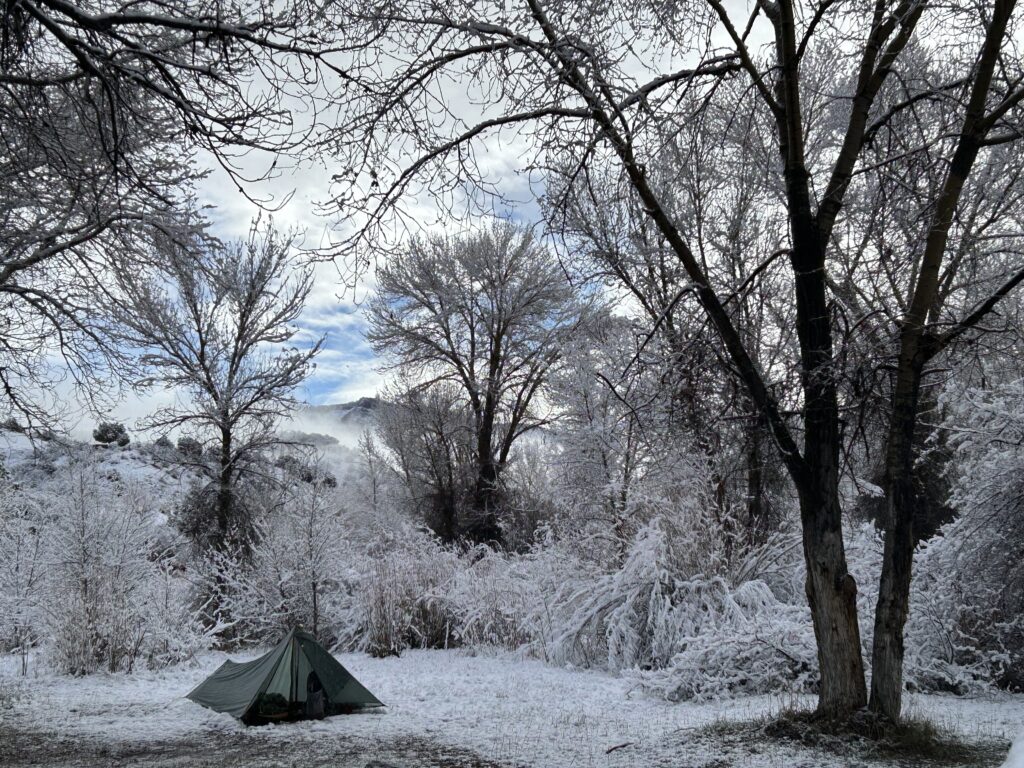
Later that morning I went to Fifth Water Hot Springs, a natural hot springs accessible only by hiking. The springs consisted of a series of terraced pools formed by mineral deposits. Each pool varied in temperature from bathtub warm to piping hot. After the 4-mile hike, I soaked in the mineral-rich waters under towering snowy cliffs. It was magical, especially after the cold nights.
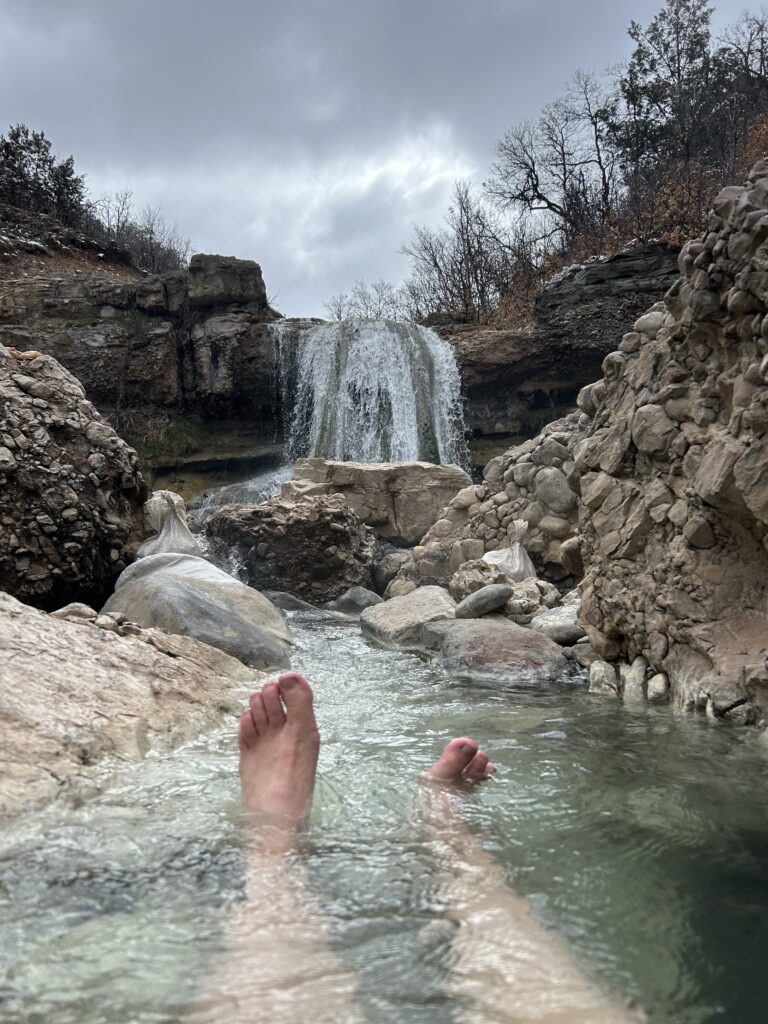
So, now I’ve tested my PCT tent. I can’t exactly say it was a flawless experience, but despite the Easter morning fiasco, I’m still happy with it. As long as I don’t camp on any more wet windy beaches, I should be all right.
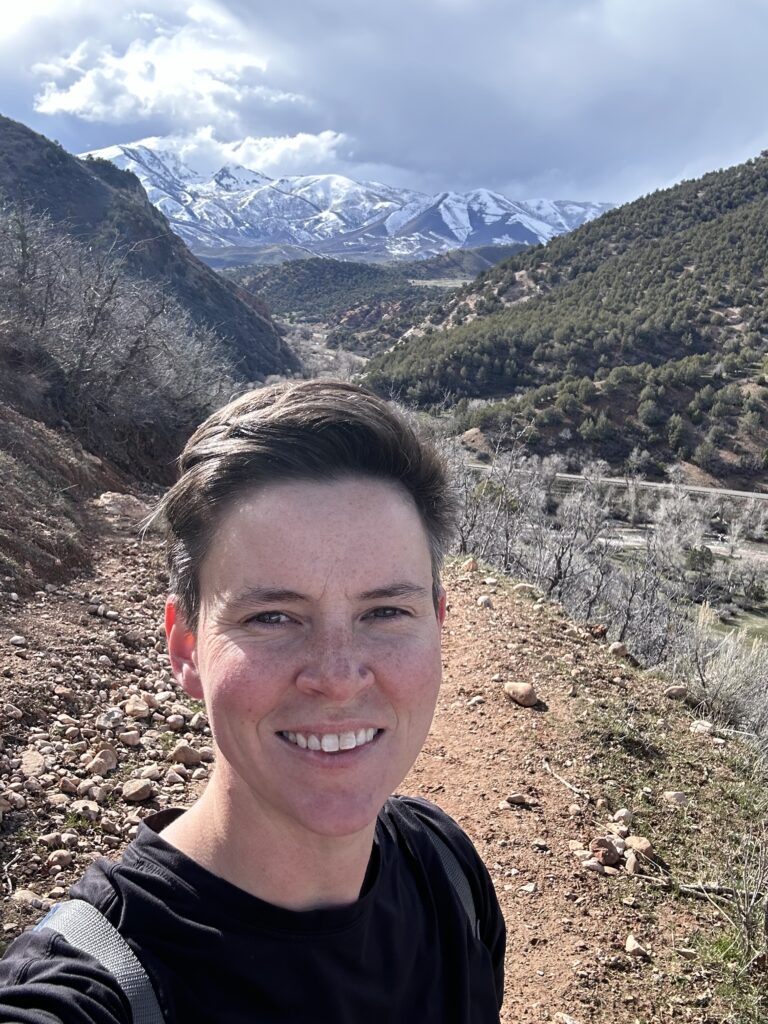

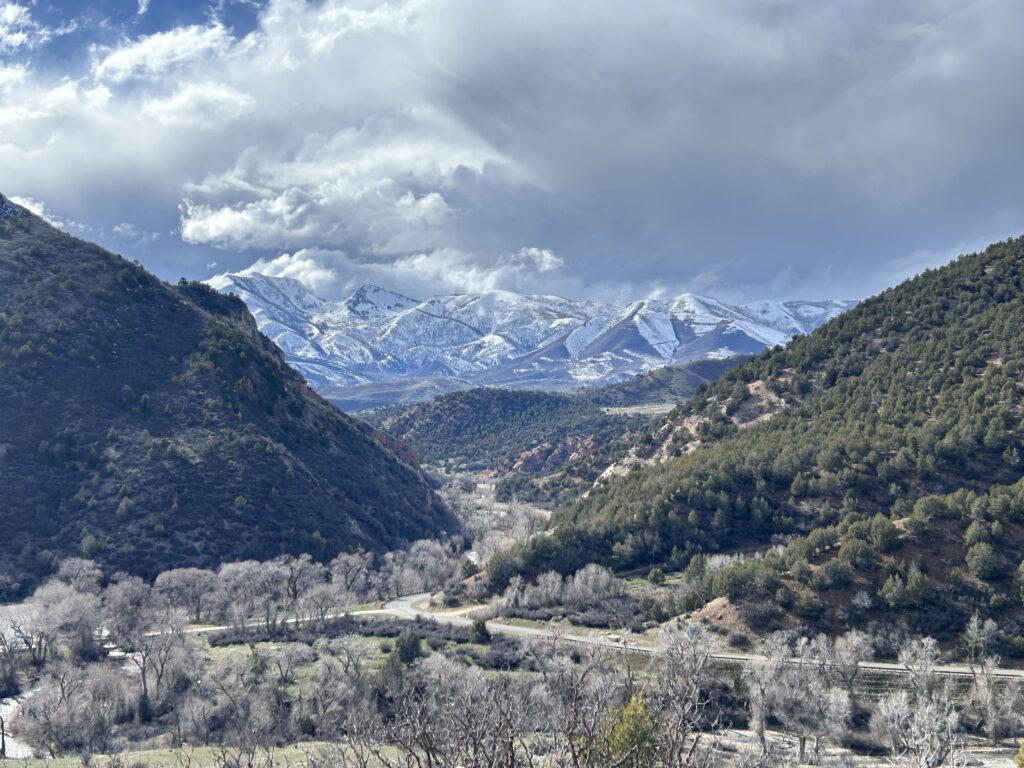
Wow Kirby, you are so brave to be out there all by yourself! Love the pics!